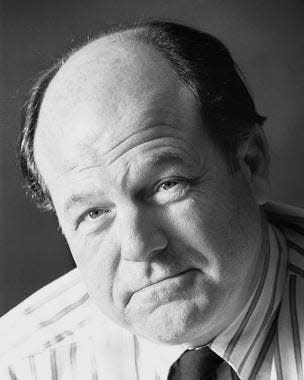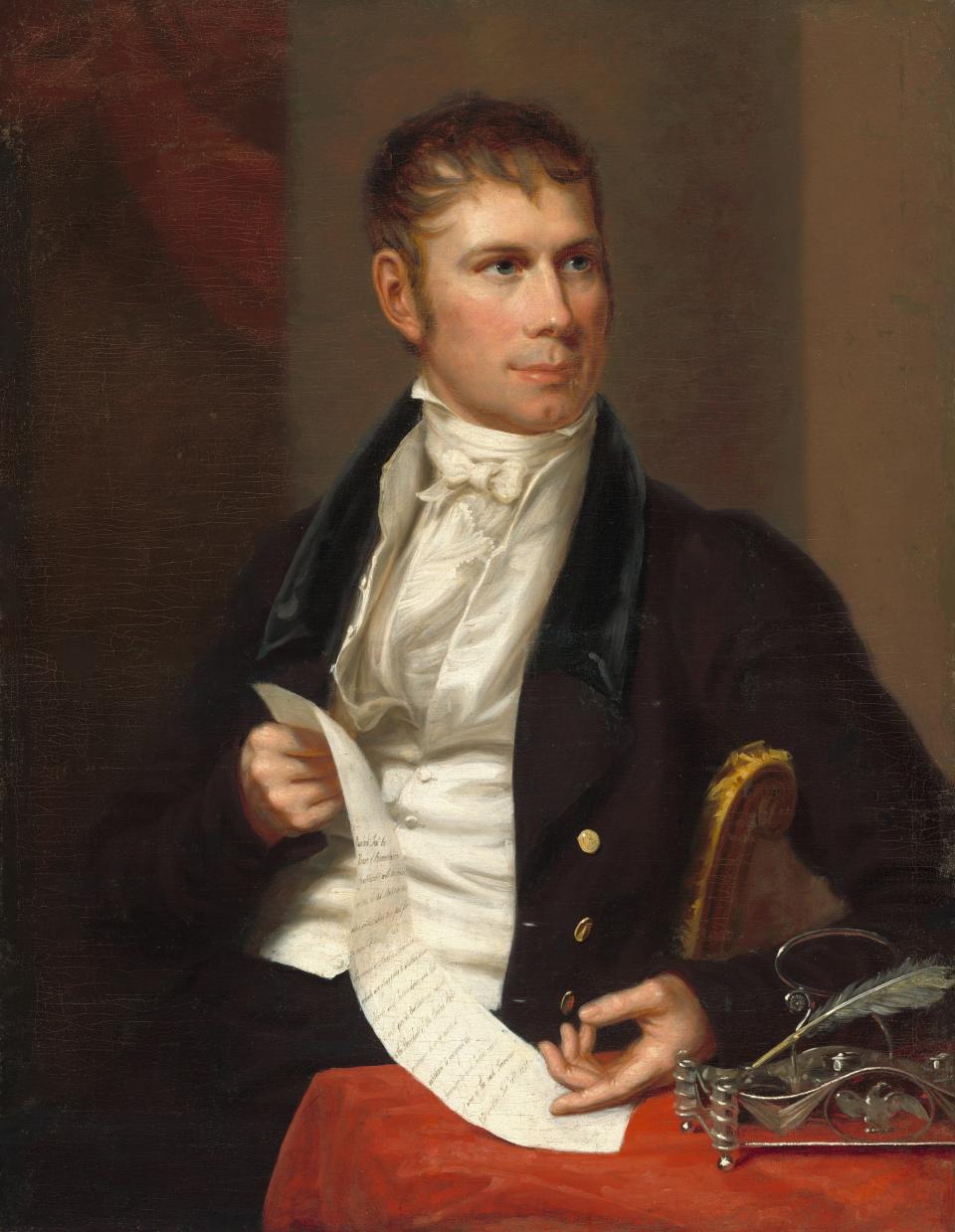Henry Clay was among controversial, 'conspicuous characters' in Columbus
- Oops!Something went wrong.Please try again later.
Henry Clay was one of the most prominent and provocative men of his time.
A son of the generation of American men who had emerged in the wake of the leaders of the American Revolution, Clay was one of the best loved, most hated and controversial men.

Trained as a lawyer, Clay was speaker of the House of Representatives more than once. He sought the presidency three times and lost all three times. And along the way he – with a little help from Daniel Webster and others – created the Whig Party.
He was called the Great Compromiser. Avoiding oncoming conflict between the North and South over the issue of slavery, Clay crafted the Missouri Compromise of 1821 and later the Great Compromise of 1850. His strategy worked and conflict did not come.
There was an old saying in ancient Rome that the importance of a man could be judged by the importance of his enemies. By that standard, Clay was a giant among men.
Andrew Jackson absolutely hated him for several reasons. Toward the end of his life, Jackson was asked what he regretted. He earnestly responded, “that I did not shoot Henry Clay or hang John C. Calhoun.”
Ed Lentz history column:Thomas Kelah Wharton's sketches provide earliest glimpses of Columbus, Ohio
When Henry Clay explained his loss to Jackson for the presidency in 1832, he said, “I would rather be right than president.”
Jackson responded by saying, “And, oh … he was neither.”
He always seemed to be at the center of controversy because he loved being there. His family had arrived in America from England in 1613 and had been a mainstay of Virginia society for several generations. Born in 1777, during the Revolution, Clay was the seventh of nine sons of John and Elizabeth Clay.
“Sir John,” a Baptist minister, died in 1781, leaving Henry two slaves in his will.
Elizabeth Clay remarried to Capt. Henry Watkins with whom Henry had learned to read and write. The family moved to Kentucky in 1791, leaving Henry in Richmond to come to the attention of George Wythe. A signer of the Declaration of Independence, Wythe was one of the best lawyers of his day. Clay became an able student and a member of the Virginia bar in 1797.

Moving to Kentucky to be near family and friends, Clay was bright, handsome and talented. He married Lucretia Hart in 1799. The couple had 11 children ‒ six daughters and five sons ‒ and were married more than 50 years. All this was rather noteworthy because Clay seldom was at home.
Leaving his home at his estate called Ashland, Clay often was on the road as a lawyer and a circuit rider. A later history recalled that “the exercise of horseback riding was promotive of clear thinking and of excellent work in court at the end of a journey. … The circuit travelers had in addition to their pecuniary compensation much satisfaction in exploring the primitive forests, in learning the habits and studying the character of the aborigines, and in taking part in or observing their amusements. In the settlements where the courts were held, the hardy and adventurous settlers and the official families of the frontier garrison often entertained the judges and lawyers with banquets, dancing and other revelry.”
Among the places the circuit riders traveled was Columbus, which was founded in 1812 to be the new capital of Ohio.
In 1818, David Deshler, a cabinet maker, arrived in Columbus with his wife, Betsy, from Easton, Pennsylvania. Betsy often wrote to her family in the East.
In 1821, she wrote, “We have had a number of conspicuous characters in Columbus this winter, among whom were Henry Clay of Kentucky, a very genteel man in his appearance, but very plain, indeed. Tell father I always thought he was plain in his dress, but Mr. Clay is much plainer. If you recollect Uncle Ben’s old-fashioned drab colored cloth coat, with the buttons as big as a dollar, you will have some idea of Mr. Clay’s coat which he wore all the time he was here.”
Clay and his colleagues practiced law in the first courts of Columbus. Court was held in a brick courthouse in Franklinton until 1824, when court was moved to Columbus. An early history noted that “the first courthouse erected in Columbus was a brick building located on the Statehouse Square nearly opposite the present main entrance of the Neil House (where the Huntington Center is today).”
Clay and his associates practiced law in this building and later in Cincinnati, Cleveland and elsewhere across the state. He went into politics and became quite famous as a Whig leader until his death in 1852. Arriving in Columbus, his remains were held in state in recognition of his passing.
He was one of the truly great men of his time.
Local historian and author Ed Lentz writes the As It Were column for The Columbus Dispatch.
This article originally appeared on The Columbus Dispatch: 'Great Compromiser' Henry Clay was conspicuous character

